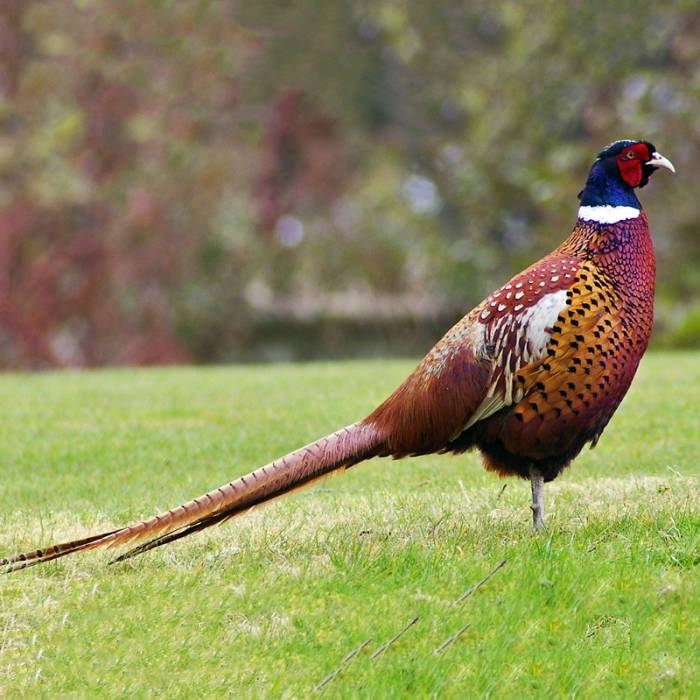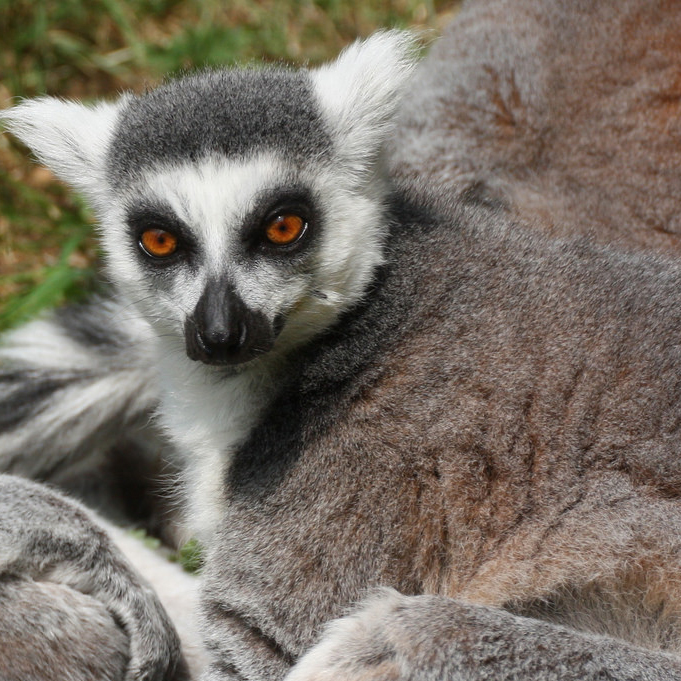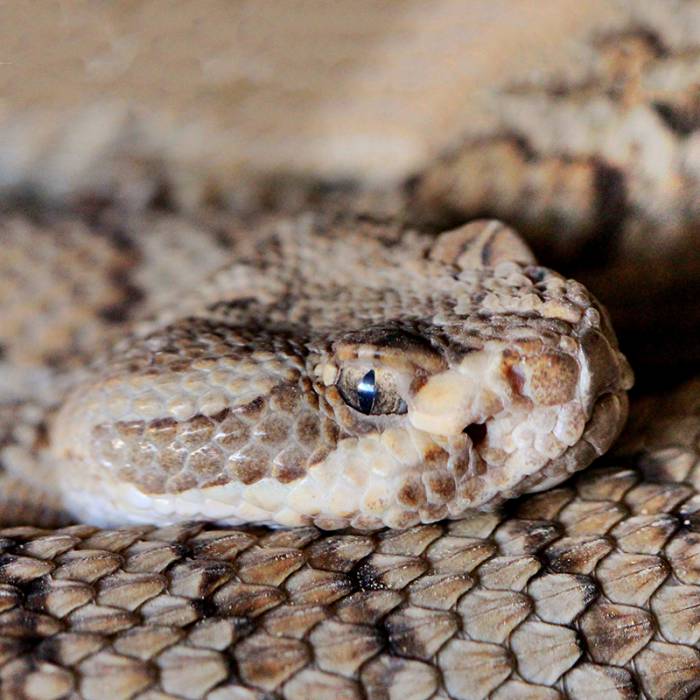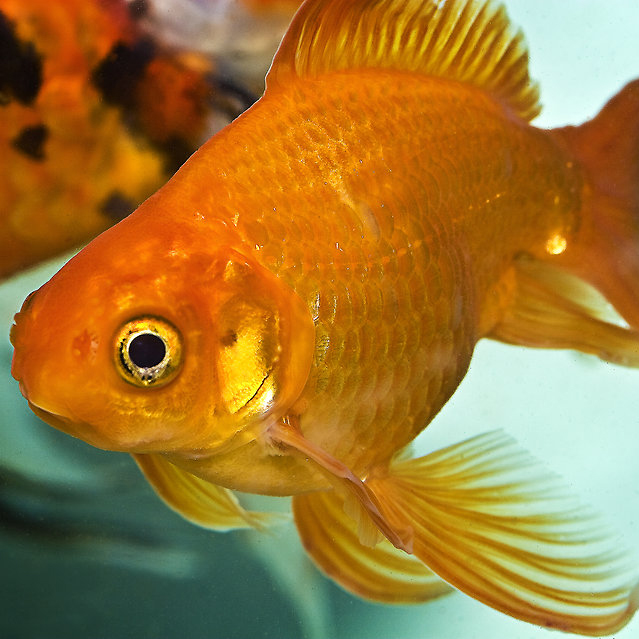Sure, you could just slap an “s” on the end of “bear” and people will know what you mean. But most animals actually have a unique name for their collective group. Though uncommon, these are all unique terms for animal groups.
Ambush

Tigers: Notoriously solitary, tigers don’t often travel in groups. So you may not ever have the chance to identify an “ambush” of tigers. And maybe that’s for the best.
Photo credit: Lotse
Bask, Float

Crocodiles: Basically, what a croc does is what it’s called. So a bunch of crocodiles on land is a “bask” while a bunch in the water is a “float.”
Photo credit: Tomas Castelazo
Bloat, Thunder

Hippopotamus: Because everyone will look at you funny if you say “hippopotami,” you could call a group of hippos a “thunder.” Or if you’re mean, call them a “bloat.”
Photo credit: Nilsrinaldi
Boil, Kettle

Hawks: While in flight, call them a “kettle.” But when they’re circling for prey, a group of hawks is a full-on “boil.”
Photo credit: Scott Jennings
Bouquet

Pheasant: Before it’s riddled with five shot, a pheasant in a group is part of a “bouquet.”
Photo credit: Gary Noon
Business

Ferrets: If you see more than one ferret, you’re looking at a “business.” And if you live near a city, it’s also a “problem.”
Photo credit: Craig M. Groshek
Cackle

Hyenas: Call it like you hear it. A group of hyenas is actually a “cackle.”
Photo credit: Ikiwaner
Cauldron

Bats: When the sky goes dark with a load of bats, you’ve got a “cauldron.” You may also want to head indoors.
Photo credit: Aidan Jones
Chain

Bobolinks: Believe it or not, a group of bobolinks is a “chain.” And to answer your next question, a bobolink is a small blackbird found in North and South America. It’s also the sole member of the genus Dolichonyx – but you probably already knew that.
Photo credit: D. Gordon E. Robertson
Charm

Goldfinch: If you see a bunch of goldfinches, it could be your lucky day; that’s a “charm.”
Photo credit: Ken Thomas
Clowder

Cats: Here kitty, kitty … Oh, there’s a bunch of you! Here clowder, clowder…
Photo credit: Eddy Van 3000
Congregation

Alligators: When you see a group of alligators it’s a “congregation.” And if you happen to be swimming, it’s “sheer horror.”
Photo credit: CarmenQueasy
Congress, Maelstrom

Salamanders: With a salamanders, as with people, “congress” and “maelstrom” mean the same thing.
Photo credit: Cristo Vlahos
Conspiracy

Lemurs: How many lemurs do you see? A bunch? I don’t know, seems like a “conspiracy” to me.
Photo credit: Mark Kent
Convocation

Eagles: The most regal animal in America earns one of the most respectable group titles: “convocation.”
Photo credit: Vtornet
Cowardice

Dogs: Puppies are a litter, wild dogs are a pack, and a roving group of feral dogs is a “cowardice.”
Photo credit: Sardaka
Crash, Stubbornness

Rhinos: Of course you could say a “stubbornness” of rhinos and be correct. But a “crash” of rhinoceroses sounds so much cooler.
Photo credit: Krish Dulal
Deceit

Lapwings: If you hear a shrill, wailing cry, then note a crest and irregular wingbeat, you’ve got yourself a lapwing. And if you see bunch more, that’s a “deceit.”
Photo credit: Joe Pell
Drift

Pigs: Typically, a “drift” refers to a group of young wild pigs.
Exaltation

Larks: Poems and songs have been written about the lark. So it’s not surprise that a group is called an “exaltation.”
Photo credit: Michele Lamberti
Fever

Stingrays: During migration, hundreds of rays fly though the water, almost like a flock of birds. That’s a “fever.”
Photo credit: Elias Levy
Gaze

Raccoons: When you flick on your porch light to see what the sound was near your garbage cans, all those beady raccoon eyes are part of a “gaze.”
Photo credit: Darkone
Implausibility

Gnus/Wildebeest: A mass of these African bovines is an “implausibility.”
Photo credit: Muhammad Mahdi Karim
Kaleidoscope, Flutter

Butterflies: It’s tough to decide whether it’s more fun to say a “kaleidoscope” of butterflies or a “flutter” of butterflies. But both are correct.
Photo credit: fesoj
Knot

Toads/Frogs: If you ever step into the grass and see a bunch of green-brown hoppers fleeing, that’s a “knot.”
Photo credit: Dave McLear
Labor

Moles: You may not ever see enough at one time to use the term, but a bunch of moles are a “labor.” That’s fitting considering their lives mostly consist of blindly chewing tunnels through the Earth.
Photo credit: Kenneth Catania
Leap

Leopards: A solitary beast by nature, it’s rare to witness a “leap.” And because a leopard can vault 20 feet horizontally and has a 10-foot vertical, it’s a fair title.
Photo credit: Srikaanth Sekar
Murder

Crows: To our knowledge, Alfred Hitchcock had nothing to do with this one. When you see hundreds of crows swarming in the sky or cawing from a tree, that’s a “murder.”
Photo credit: Son of Groucho
Mutation

Thrushes: It may seem an odd term, but the “mutation” of thrushes may derive from an apocryphal belief that thrushes shed their old legs at maturity and grew new ones. No, they do not.
Photo credit: Milo Bostock
Obstinacy

Bison/Buffalo: Honk, holler, wave – if you’ve ever encountered a group of bison blocking a road, you know that “obstinacy” is an appropriate name.
Ostentation

Peacocks: “Ostentation” suffices for a group of peacocks because “OMG, look at us, we’re FABULOUS!” doesn’t quite roll off the tongue.
Photo credit: Jatin Sindhu
Pandemonium

Parrots: If you’re surrounded by parrots, it’s literally “pandemonium.”
Photo credit: Senthil Kumar
Parade, Memory

Elephants: A “memory” of elephants is an older and less common term for a group of the pachyderms. But “parade” is still fairly common.
Photo credit: Bernard DUPONT
Parliament

Owls: Yes, a group of owls is a “parliament.” As for the funk, that belongs to everyone.
Photo credit: Jessie Eastlan
Pitying

Turtledoves: On the second day of Christmas, your true love gave you a “pitying” of turtledoves.
Photo credit: Yuvalr
Posse, Gang

Turkeys: The Sharks and the Jets aren’t the only posses or gangs. That also works for a bunch of gobblers.
Prickle

Porcupines: Whether or not you see a “prickle” of porcupines, just say it a few times. It’ll make you smile.
Photo credit: Eric Kilby
Quiver

Cobras: If you look around spot a bunch of cobras, you could say, “I see a quiver.” Or, you could just say, “AAAAAHHHHH!”
Photo credit: ASIM CHAUDHURI
Rhumba

Rattlesnakes: It’s definitely not common, but “rhumba” is a known term for a group of rattlers. And no, they will do nothing to clean your floor.
Photo credit: Renee
Romp, Raft

Otters: They hold hands, they eat like people, and in a group these amphibious mammals constitute a “romp” or a “raft.”
Photo credit: Michael Baird
Shiver

Sharks: When they sense blood in the water, sharks go into a frenzy. And together they’re called a “shiver.”
Photo credit: Elias Levy
Shrewdness

Apes: Don’t call them monkeys. Do call them a “shrewdness.”
Photo credit: Pierre Fidenci
Sleuth

Bears: If you see a bunch of bears passing by, make a note that it’s a “sleuth” as you swiftly pack up your campsite.
Smack

Jellyfish: Who comes up with this stuff? A bunch of blobby jellies is, in fact, a “smack.”
Photo credit: Dan 90266
Stand, Flamboyance

Flamingoes: “Stand” is far more common than “flamboyance” when referring to flamingoes. But who doesn’t want to say, “Look at that flamboyance of flamingoes!”
Photo credit: How I see Life
Tower

Giraffes: Now you know a group of giraffes is a “tower.” But do you know whether their tongues are red or black?
Photo credit: Luca Galuzzi
Troubling

Goldfish: Whether they’re pets or delicious cheddary snacks, if you’ve got too many goldfish it’s literally “troubling.”
Photo credit: Randen Pederson
Venue, Volt

Vultures: In flight, vultures are referred to as a “venue” or “volt.” But when they’re feeding on a carcass, that’s a “wake.” Creepy.
Photo credit: Dibyendu Ash
Wisdom

Wombats: Yes, a “wisdom” refers to a group of wombats. Now repeat after me: “I wuv a wisdom of wombats.”
Photo credit: JJ Harrison
Zeal, Dazzle

Zebras: There are myriad theories as to the purpose of a zebra’s stripes. Camouflage, insect repellent, and temperature control have all been postulated. But one thing is for certain, in a group, they’re a “zeal” or a “dazzle.”
Photo credit: Paul Maritz

